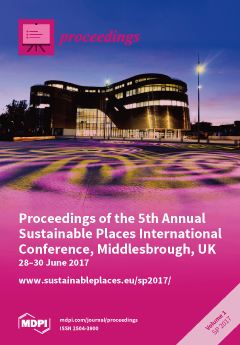Open AccessProceeding Paper
Development of Future EU District Heating and Cooling Network Solutions, Sharing Experiences and Fostering Collaborations
by
Andrea Costa, Tatiana Loureiro, Francesco Passerini, Susana Lopez, Dirk Pietrushka, Martin Klepal, George Halikias, Ioannis Meintanis, Serafeim Moustakidis, Nikos Karcanias, Martin Bucholz and Inés Arias
Cited by 2 | Viewed by 2729
Abstract
Heating and cooling consume half of the EU’s energy and much of it is wasted. The lion’s share of heating and cooling is still generated from fossil fuels, mainly natural gas, while only 18% is generated from renewable energy. In order to fulfil
[...] Read more.
Heating and cooling consume half of the EU’s energy and much of it is wasted. The lion’s share of heating and cooling is still generated from fossil fuels, mainly natural gas, while only 18% is generated from renewable energy. In order to fulfil the EU’s climate and energy goals, the heating and cooling sector must therefore sharply reduce its energy consumption and cut its use of fossil fuels. To this end the European Commission adopted a heating and cooling strategy in February 2016 as part of the wider Energy Union Package. A number of activities and projects funded by the programmes of European Union are supporting this new EU heating and cooling strategy.
Full article



